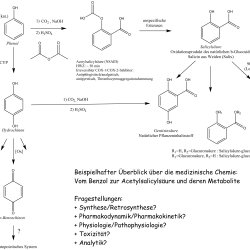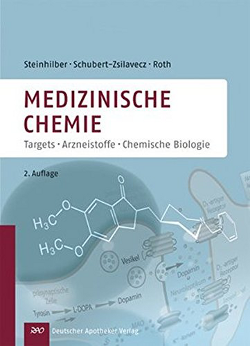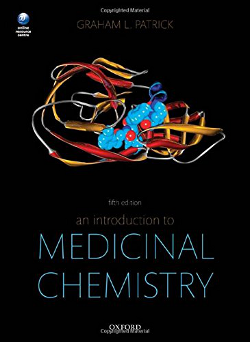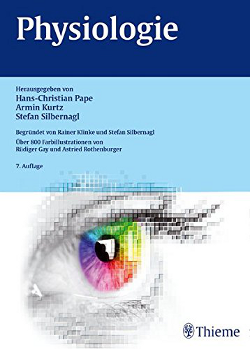Welcome to the information page of the Chemistry Student Council on the Master’s program “Medicinal Chemistry” at the University of Regensburg 🙂
Introduction – General Information – Contact person – Organisation – Links – Literature
Introduction
The medicinal chemistry course is unique in the scientific and medical study as an independent Master’s program in this form.
As a postgraduate course following the Bachelor’s degree in Chemistry (or equivalent), it focuses on organic-chemical aspects, all classes of active substances with synthesis and structure-activity relationships which are taught by the Faculty of Pharmacy.
The courses are in collaboration of the Pharmacy an Chemistry departement.
Further information on the program: https://www.uni-regensburg.de/chemie-pharmazie/fakultaet/studium/chemie/master-medizinische-chemie/index.html
General Information
Medicinal chemistry as an independent discipline is still quite new compared to classical chemistry – the specialist group of the German Chemical Society exists since 1971.
But, where is the difference, where is the link between chemistry and medicine?
In principle, it makes little sense to ask this question at first glance – medicine, or rather life itself, does not exist without chemistry.
All processes of all biological systems are (bio-)chemically controlled, and can therefore be influenced biochemically to a certain extent.
This is precisely where medicinal chemistry comes in – more as an interdisciplinary link between the more theoretical basic science of chemistry and the more practical or macroscopically oriented sciences of pharmacy, biology and medicine.
Consider one of the first and still most important drugs, acetylsalicylic acid (pictured: various theoretical routes to acetylsalicylic acid with metabolites of the reactants and products).

The questions such a chemically quite simple molecule can raise are practically unlimited and far from being fully clarified. Its “effect” as a painkiller is far from being enough. The molecular mechanisms of the phenomenon of “pain” must first be clarified before the complete elucidation of the mechanism of action can be considered. And where there is an effect, there is always some form of side effect – what does this look like? Which molecular mechanisms are involved? How is a drug metabolized and eliminated? What effect(s) and side effect(s) are caused by the metabolites? Which structural features can be changed in order to optimize the effect and/or reduce side effects? What direct and/or indirect interactions with other drugs are to be expected?
These are just some of the questions that play a key role in medicinal chemistry (as in pharmacy and medicine).
A significant future field of research goes a big step further: if established active substances are no longer sufficiently effective (classic: painkillers for severe chronic pain) or – for example antibiotics for multi-resistant pathogens – ineffective, or if there is a desire for new, possibly more tolerable, more economical, stronger or mechanistically completely different substances, then new paths must be taken that constitute the main application of medicinal chemistry: Active substance design, e.g. by computer simulation and appropriate synthesis planning, taking into account known or suspected biological effects, e.g. by analogy with natural active substances.
To return to the example of acetylsalicylic acid, which was originally discovered as non-acetylated salicylic acid from willow bark extracts: Many natural substances are pharmacologically interesting, if known at all already. This is an enormous field of research that is only just beginning. Synthetic analogs or fully synthetic active ingredients without natural analogs expand the possibilities immensely. Here, for example, not only ingredients known to be primarily effective are of importance. In particular, bacterial or animal toxins, some of which are highly toxic or highly effective, offer excellent possibilities in the appropriate dosage and type of application for a wide range of indications. Botulinus toxin (exotoxin of Clostridium botulinum), for example, is an active ingredient with a high public profile, which actually only plays a secondary medical role in its (better known) application in aesthetic surgery.
Multiple examples can be found on the european official list of registered Orphan Drugs, a list of active ingredients: http://www.orpha.net/orphacom/cahiers/docs/DE/Verzeichnis_der_in_Europa_zugelassenen_Orphan_Drugs.pdf
Contact person
Eure Ansprechpartner zu allgemeinen Fragen oder während des Masterstudiums sind nachfolgend aufgelistet, jeweils mit Link zur entsprechenden Homepage:
Chair for Pharmazeutical and Medicinal Chemistry II
Prof. Dr. Pierre Koch: https://www.uni-regensburg.de/chemie-pharmazie/pharmazeutische-medizinische-chemie-ii/startseite/index.html
Chemistry – Institut for Organic Chemistry
Prof. Dr. Burkhardt König: https://www.uni-regensburg.de/chemie-pharmazie/organische-chemie-koenig/startseite/index.html
Coordination- Contact person for applications and programs
Dr. Claudia Wanninger-Weiß: http://www.uni-regensburg.de/chemie-pharmazie/studiengangskoordination-chemie/index.html
Organisatorical
Admission requirements: Good Bachelor’s degree (average grade at least 2.5) in Chemistry or Biochemistry. Comparable natural science degrees will be assessed individually.
External application procedure: Two-stage; in addition to the obligatory degree certificate, CV and application form, a written letter of motivation must be submitted.
Links
Examination regulations: https://www.uni-regensburg.de/studium/pruefungsordnungen/magister-master/medicinal-chemistry/index.html
Literatur
Basic Literature
 |
Steinhilber: Medizinische Chemie
http://www.deutscher-apotheker-verlag.de/bereiche/chemie/view/titel/57264.html |
 |
Patrick: An Introduction to Medicinal Chemistry |
Further Literature
 |
Silbernagl, Pape: Physiologie |
